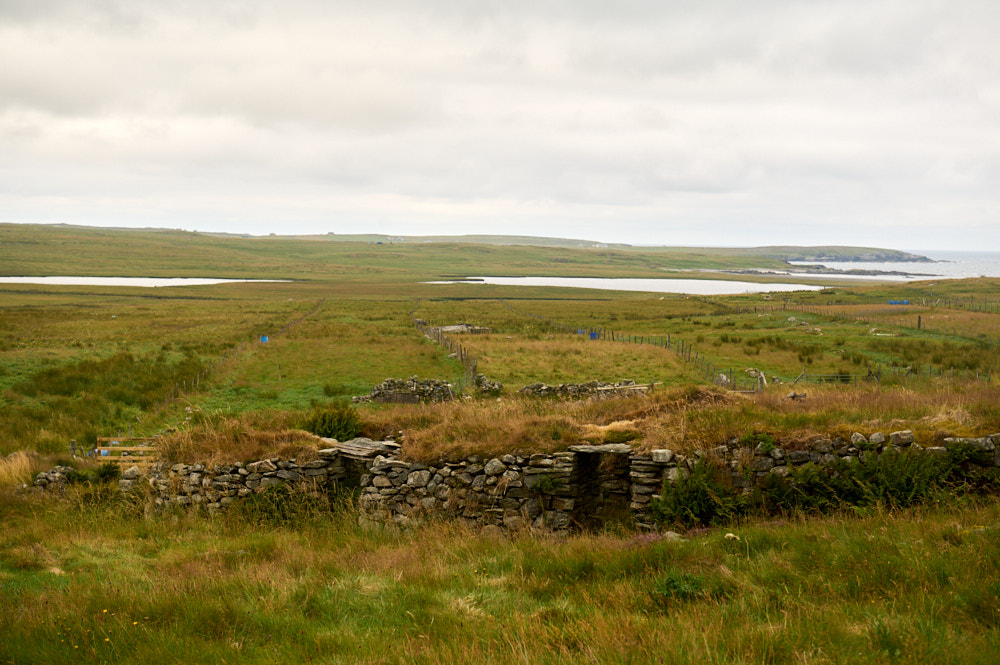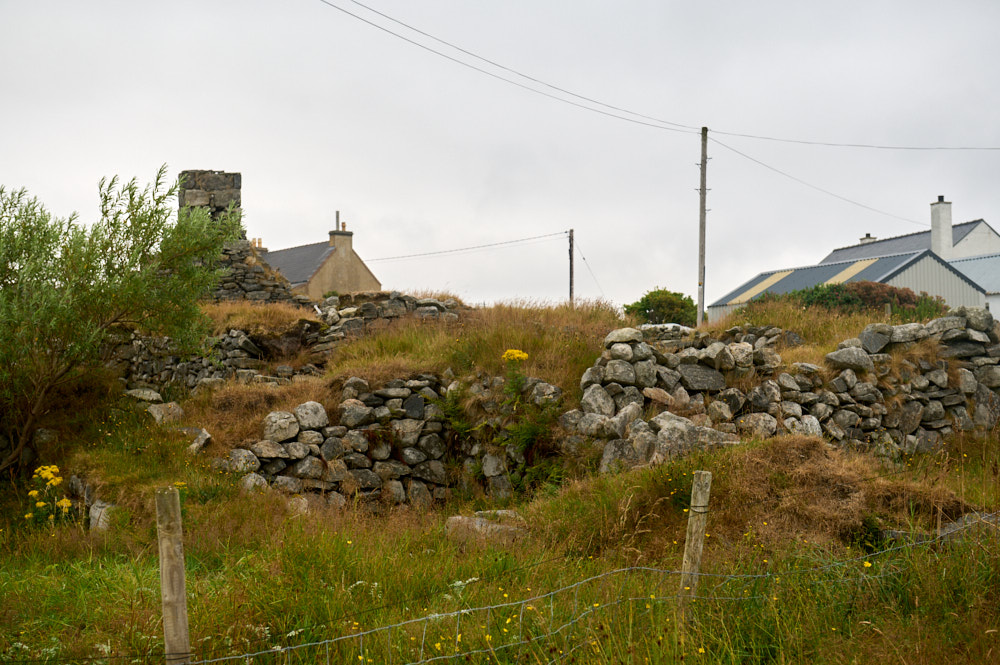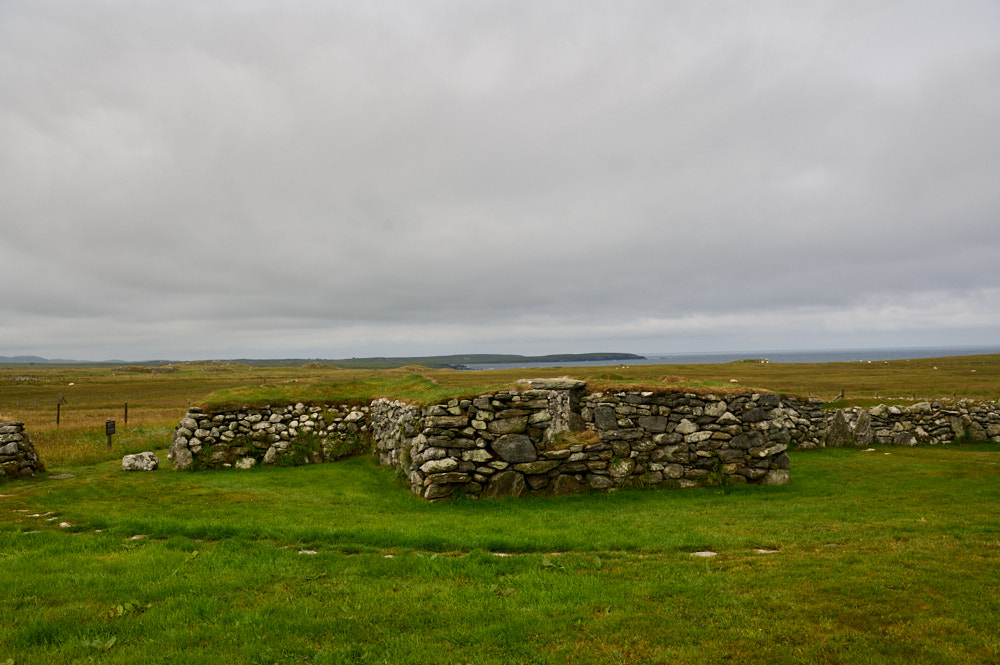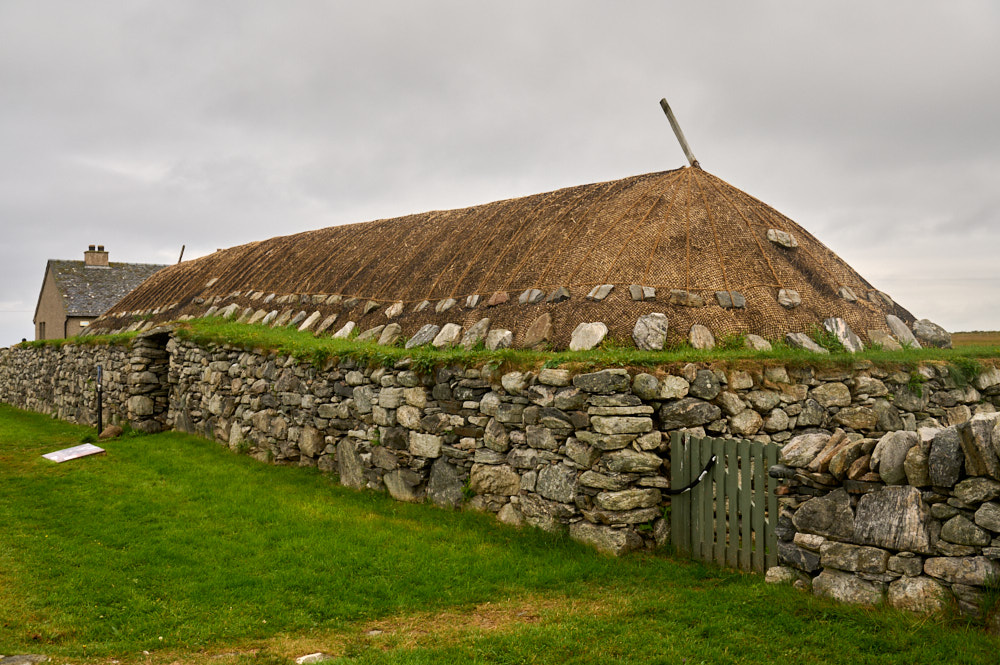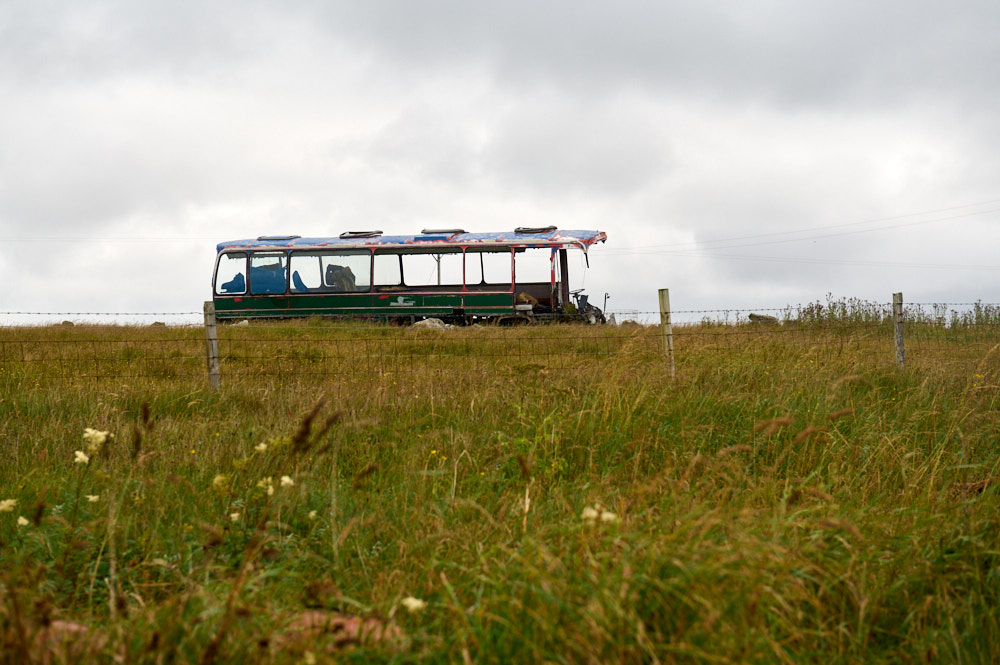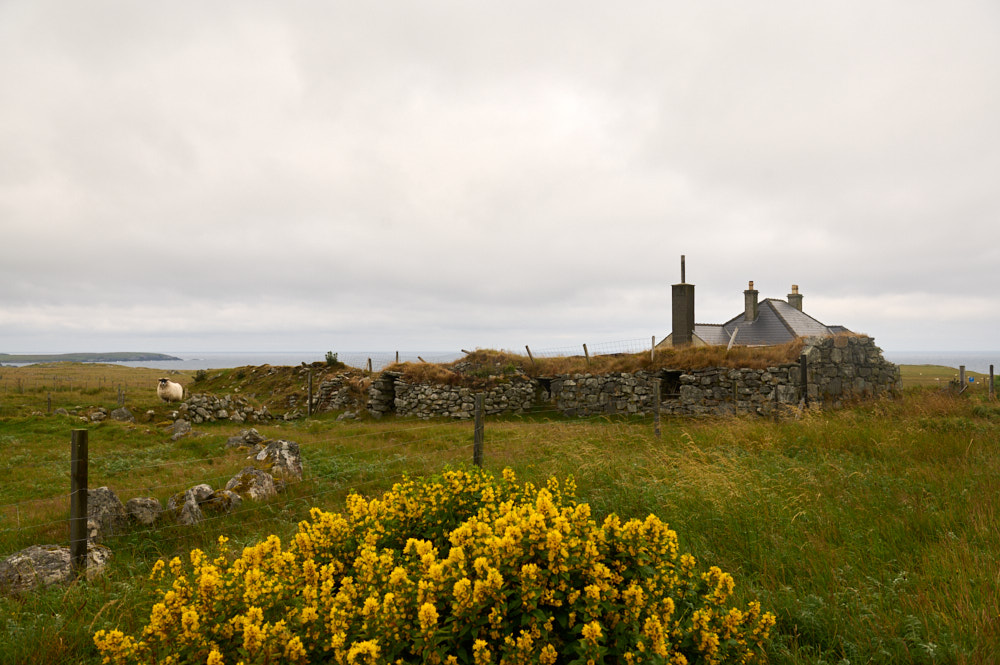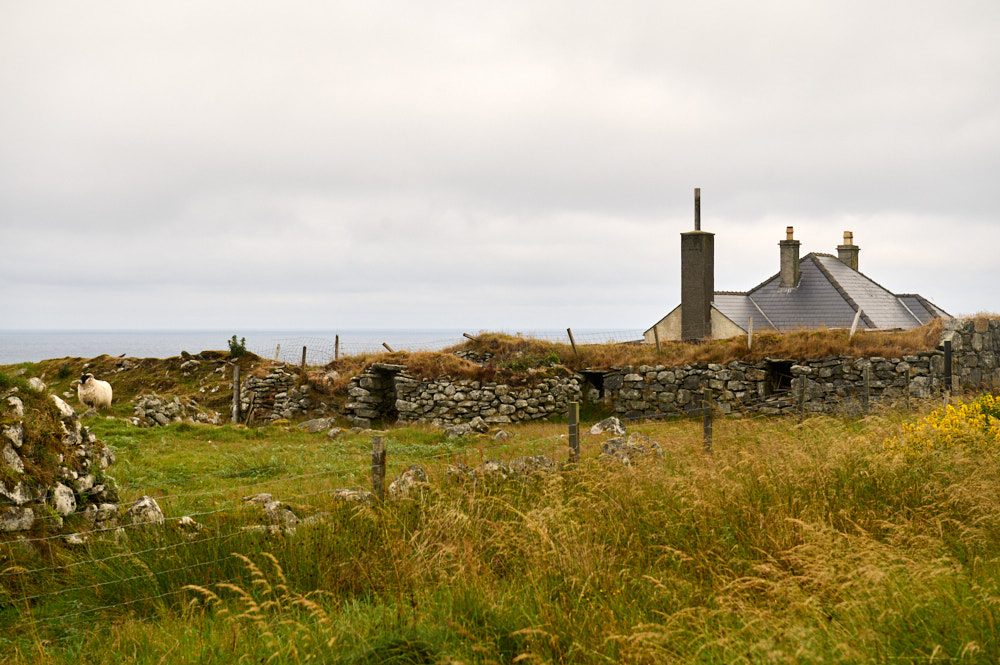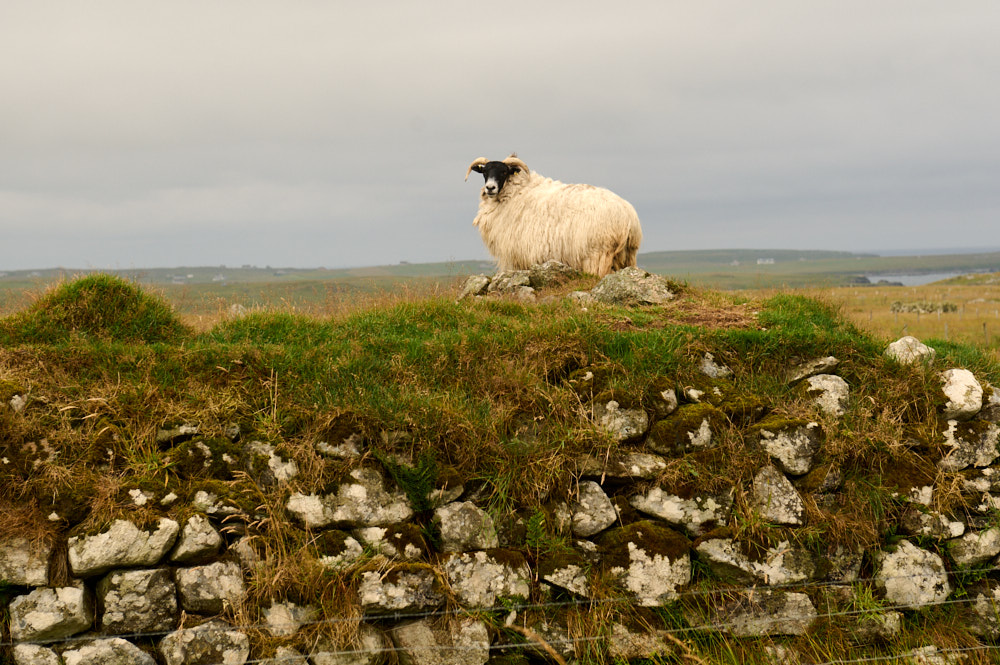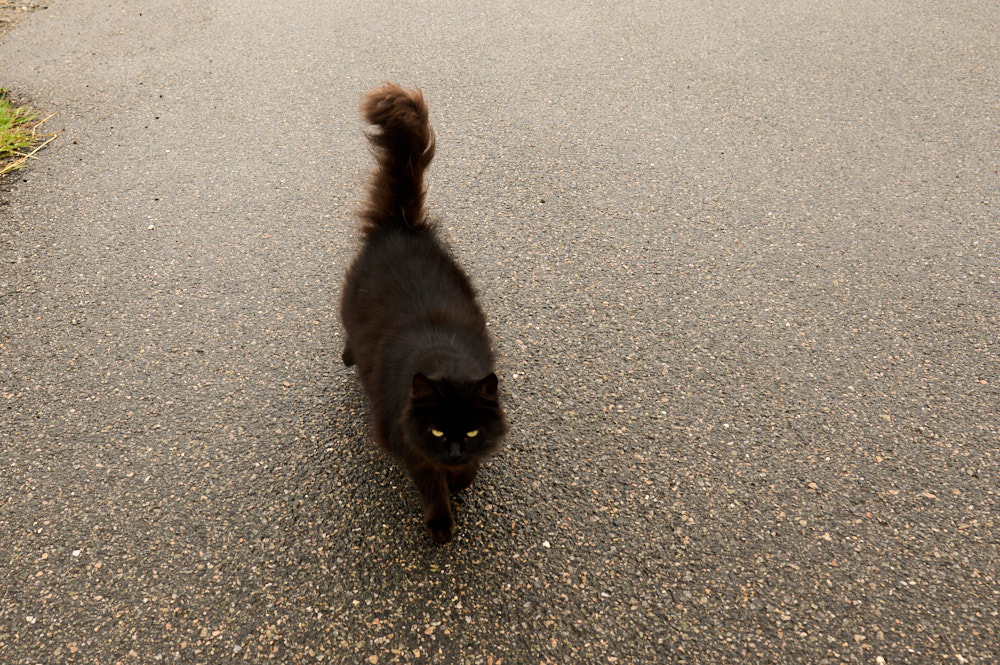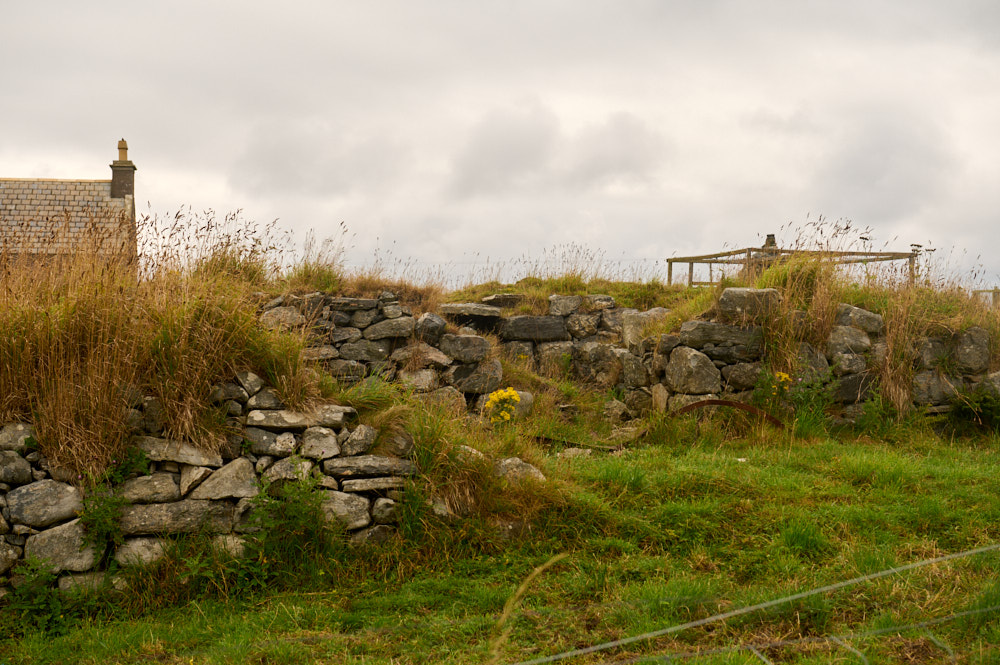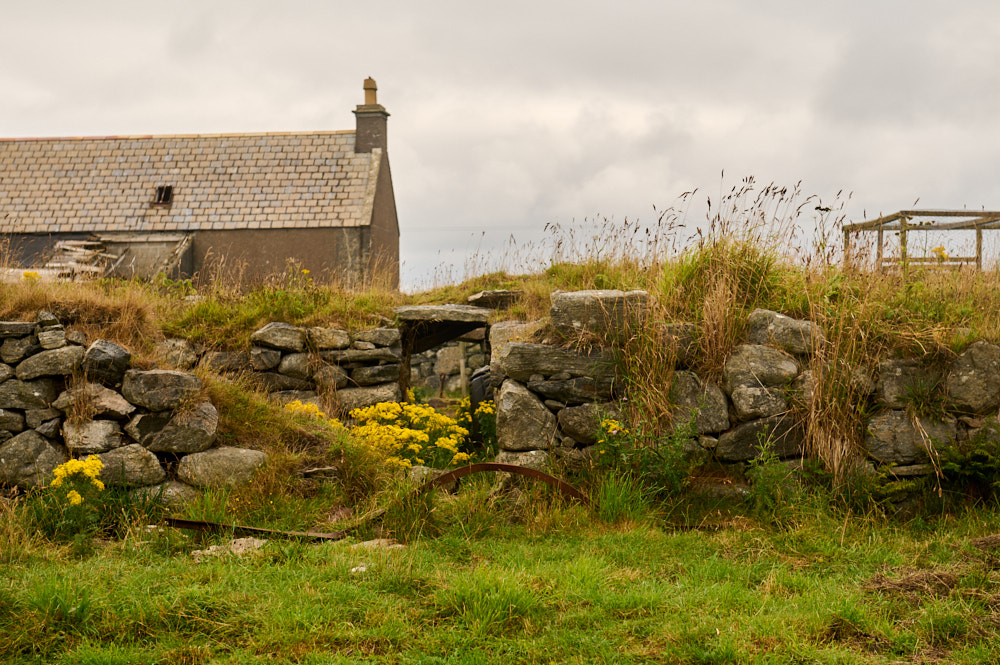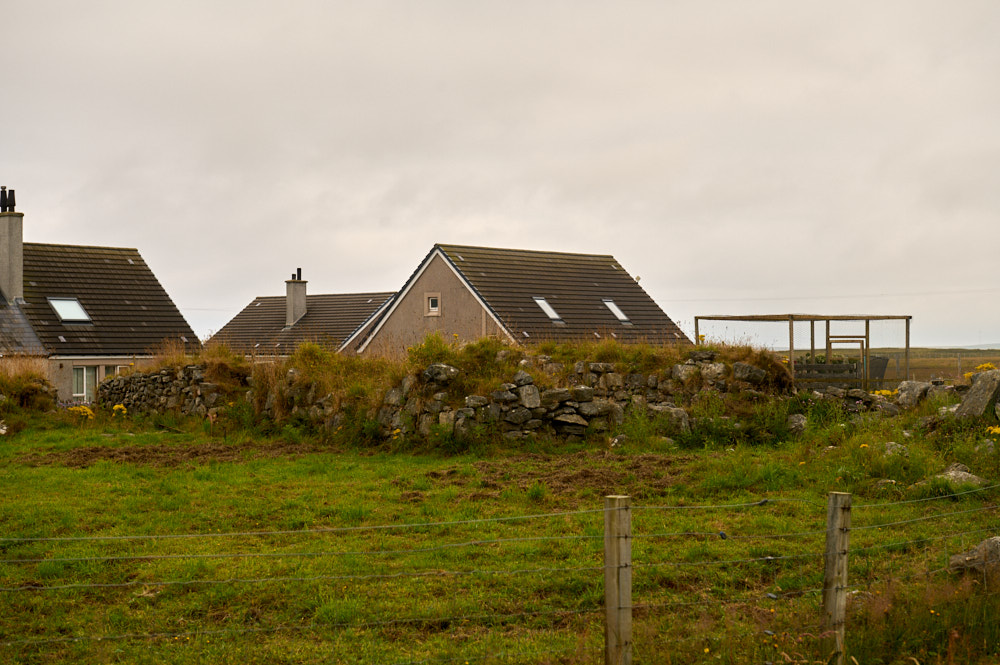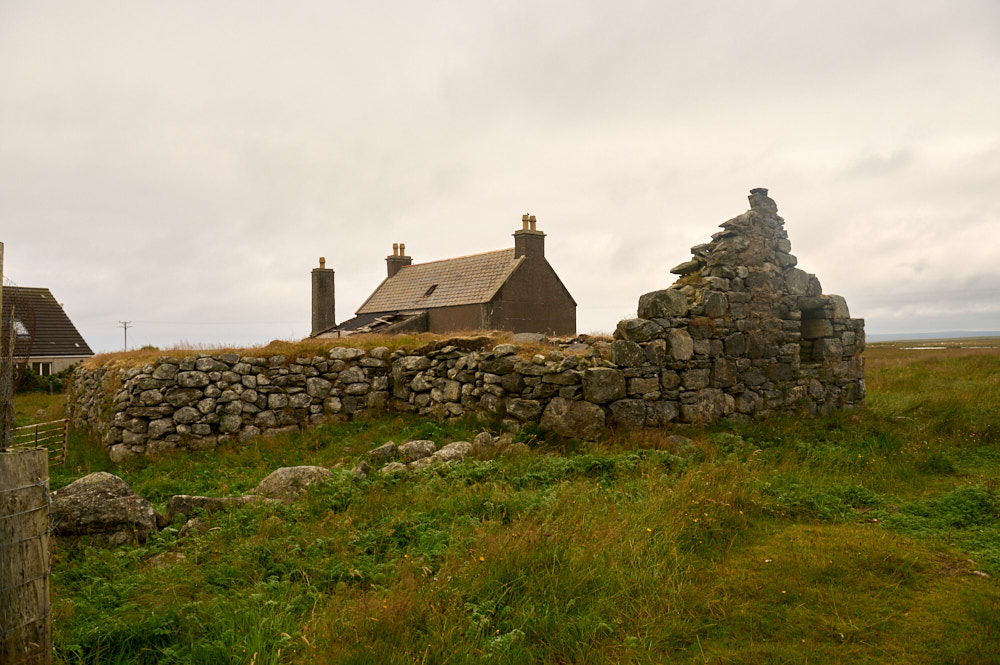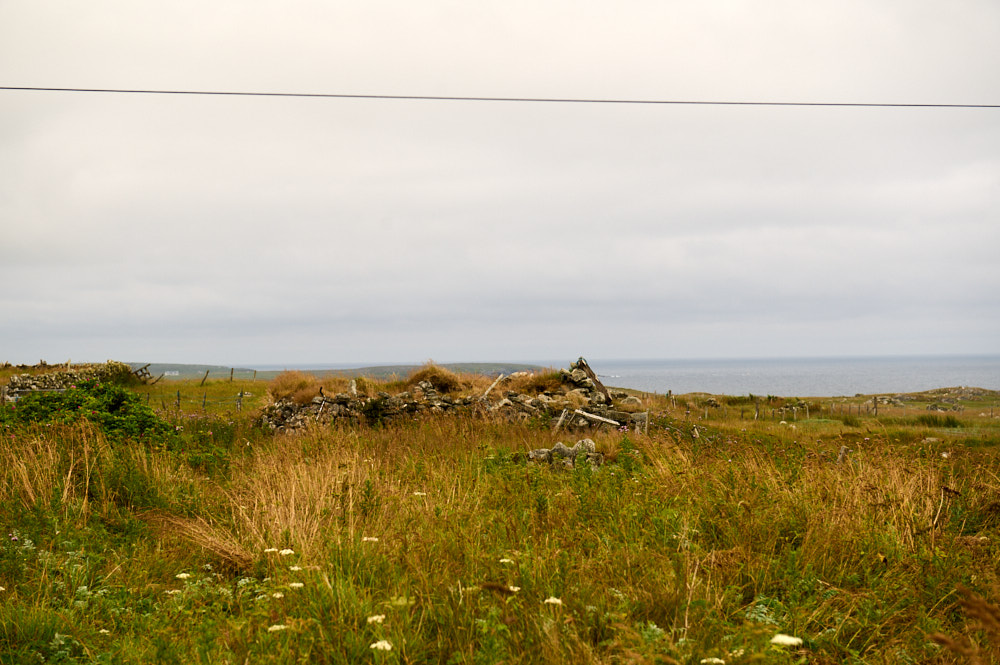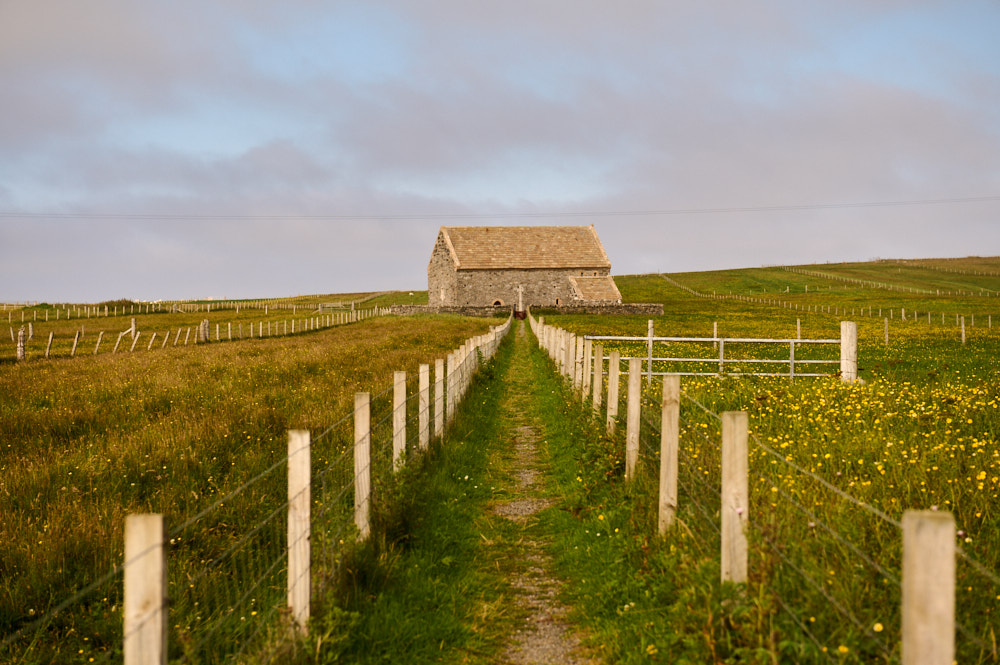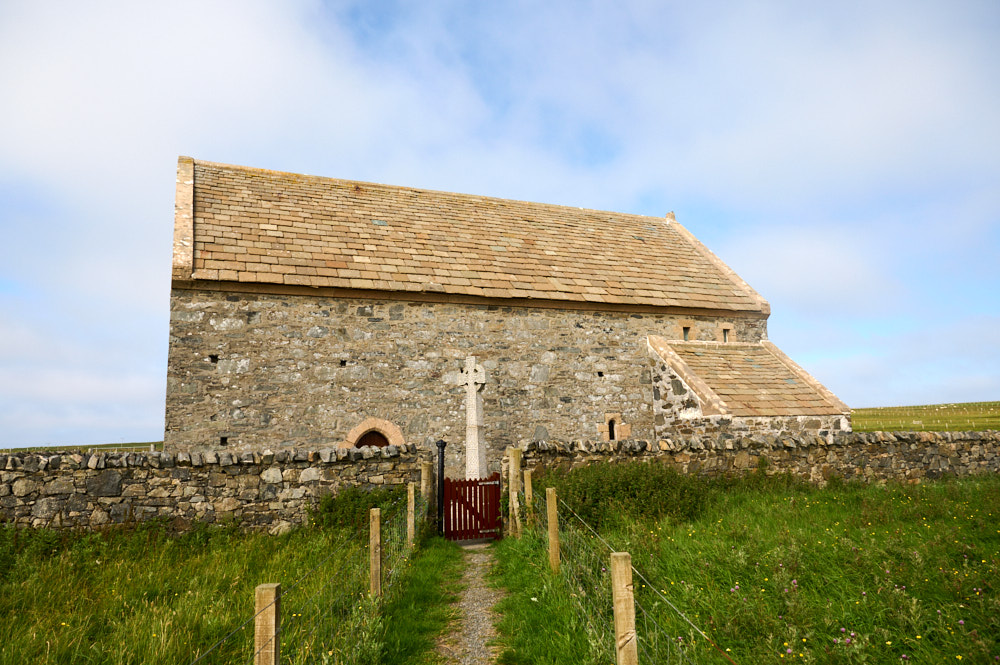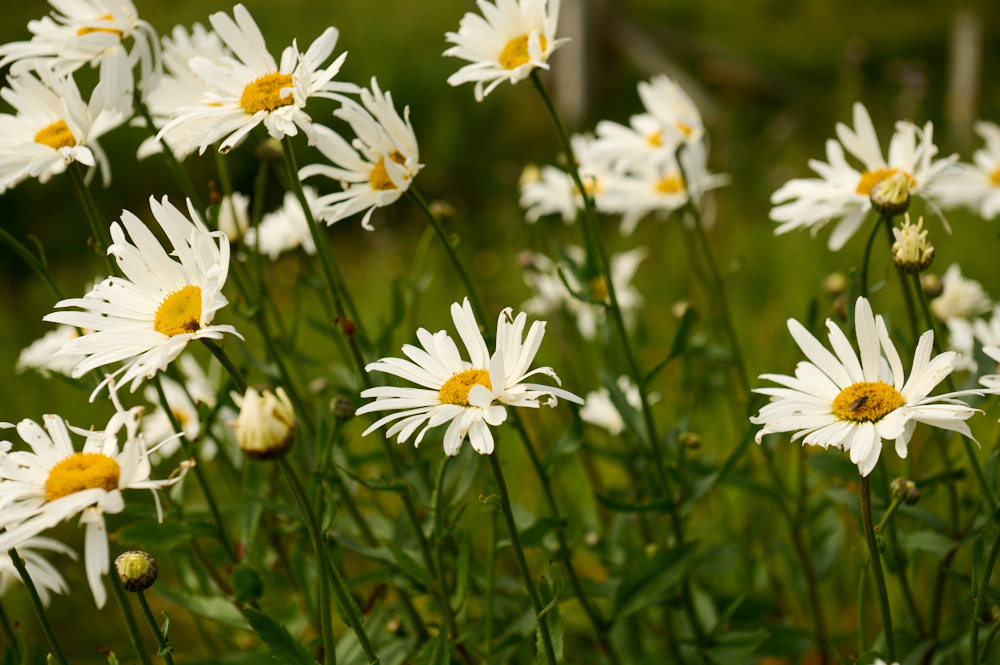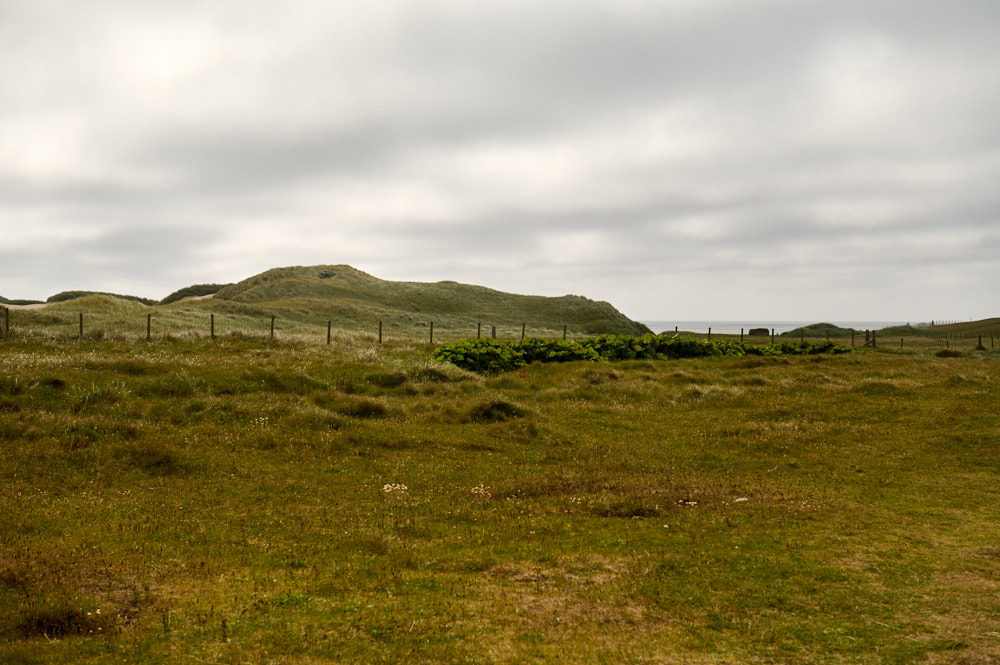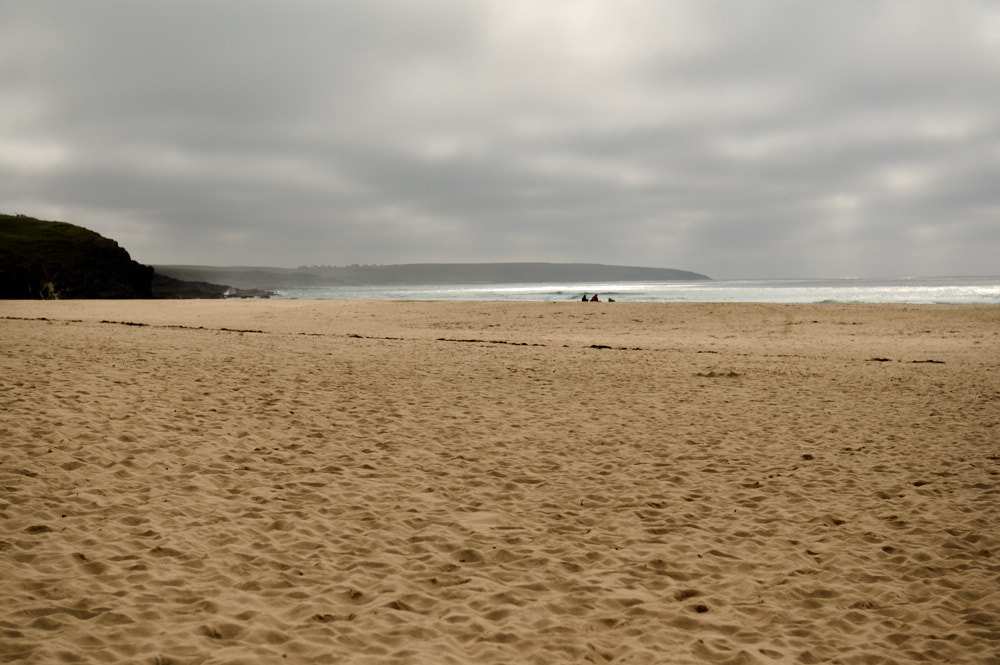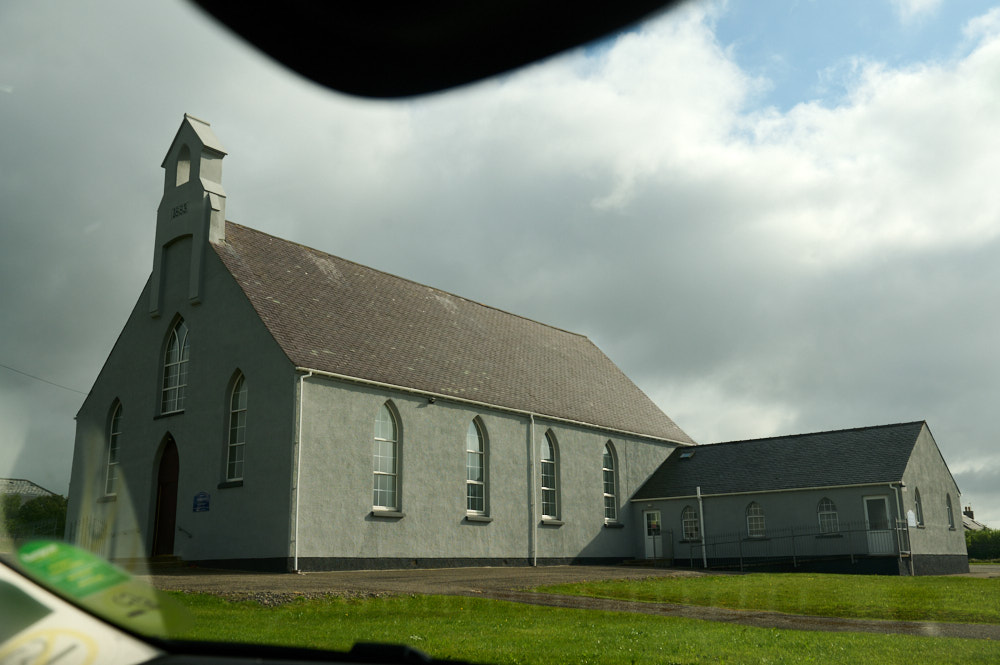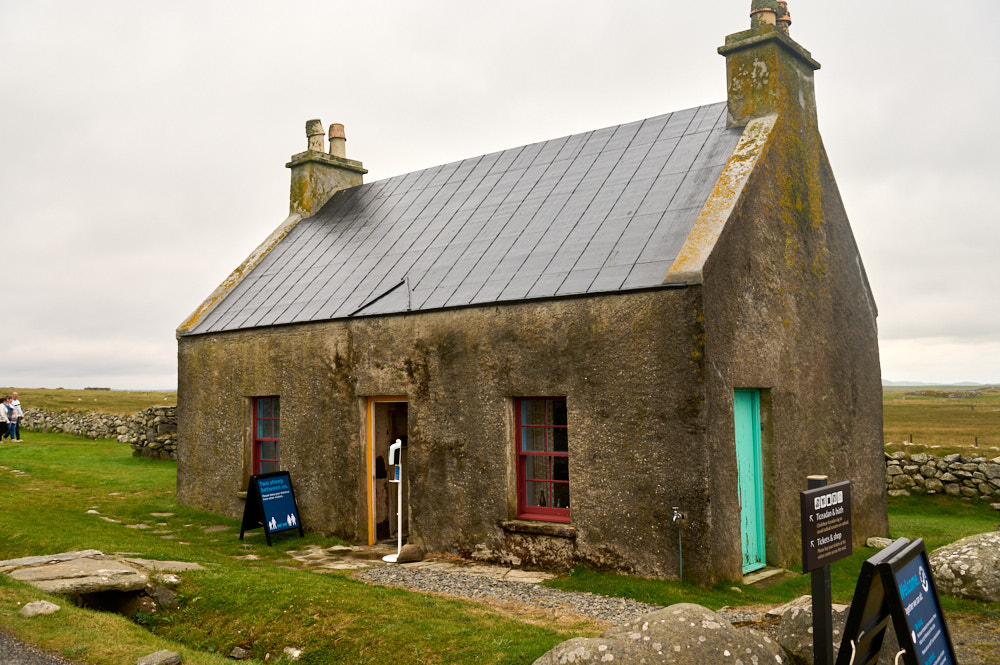
Arnol No 39 right opposite the Arnol Blackhouse is a “White House” which can also be visited. The cottage is furnished as it was in the 1950s and shows the world into which blackhouse residents moved.
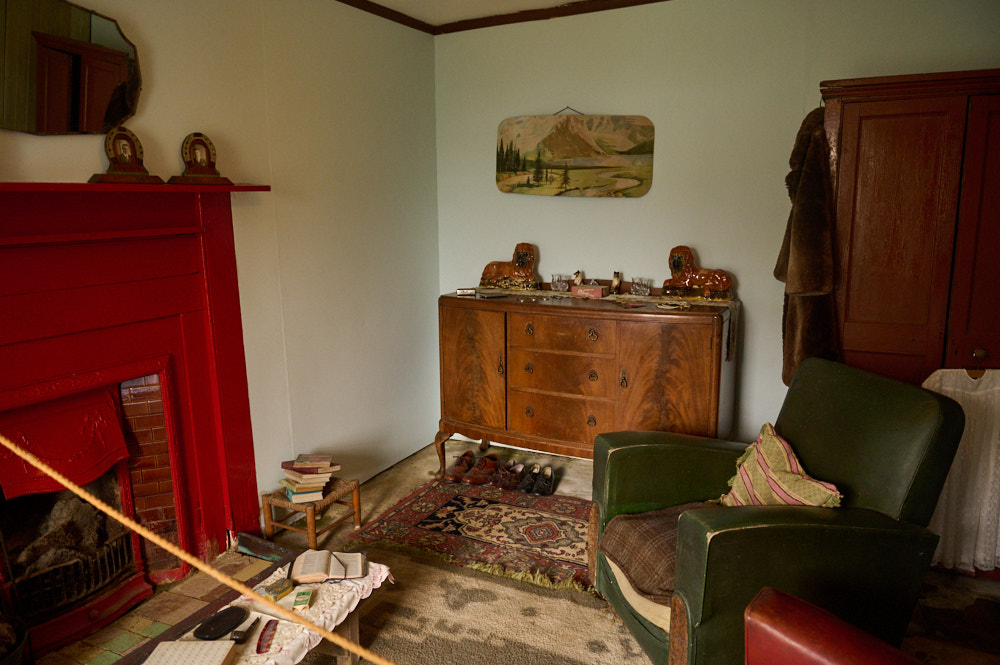
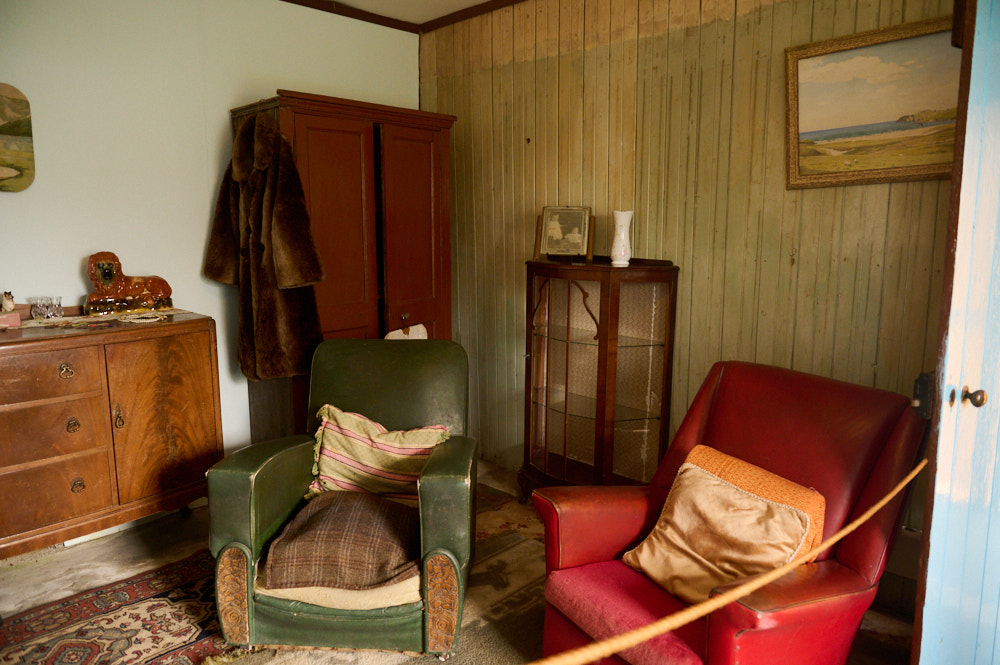
A different type of house appeared when new health regulations required byre and dwelling to be separated by a wall. The single-walled dwellings cemented with lime mortar were such a contrast they were called taigh-geal (‘white house’). The term taigh-dubh (‘blackhouse’) was used to describe the old houses from then on. (Historic Enviroment Scotland)
The White House at No 39 was built in the 1920s and lived in until 1976. It looks like a modern-day house. It has solid walls. windows that open, chimneys and a pitched roof.

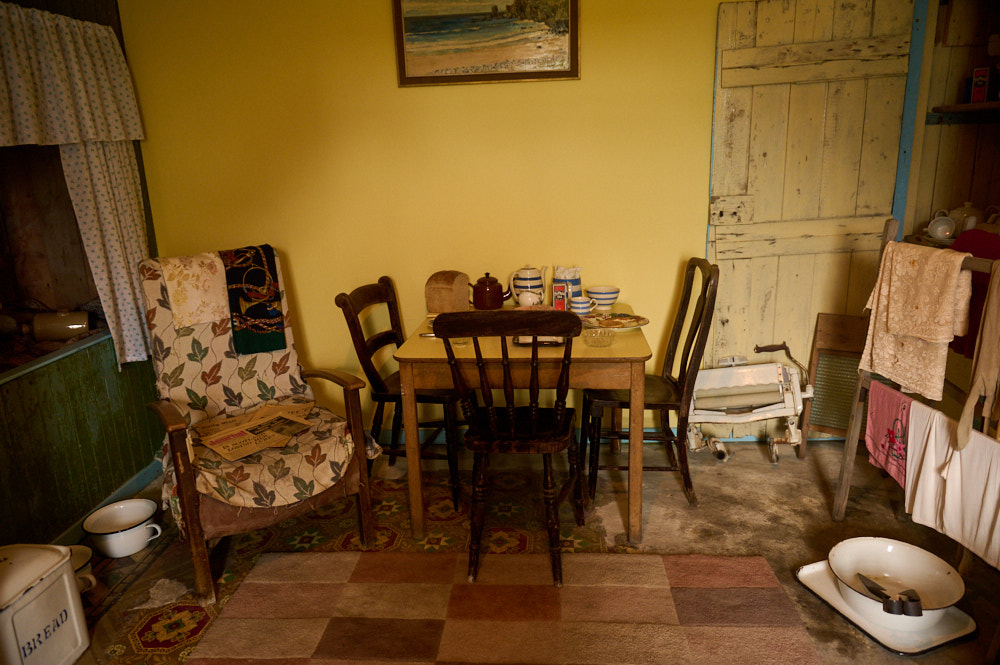
After visiting the White House I did another walk around Arnol, this time I went to the nature reserve, not to look out for birds, but just to enjoy the beautiful landscape.
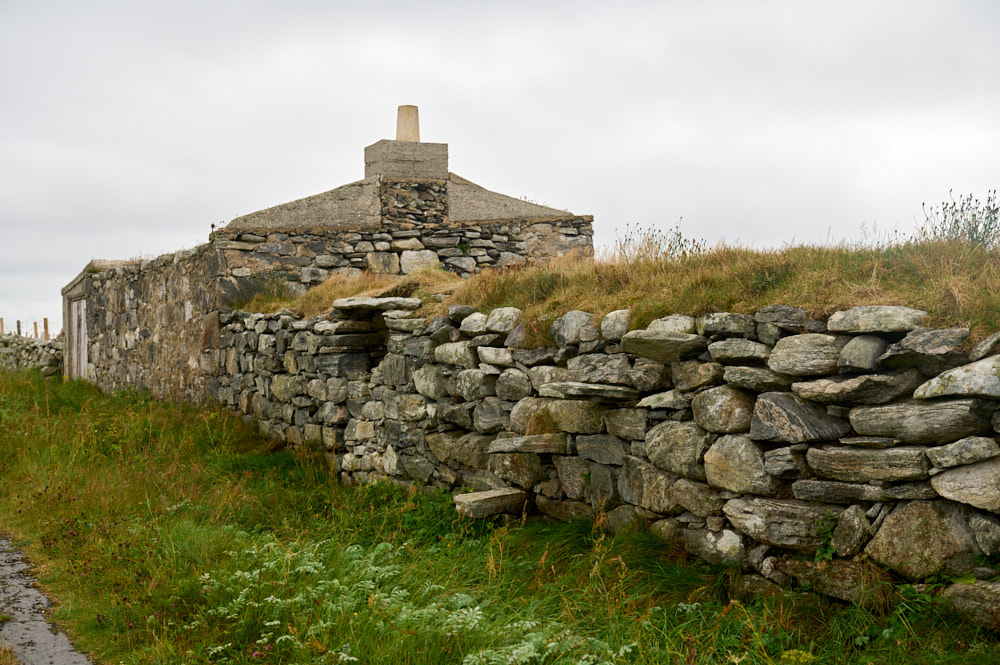
And I found more remains of blackhouses, like this one – where a modern house was built next to a white house that was built next to a blackhouse. I always loved to see these little “stairs” leading up to the former thatched roof.
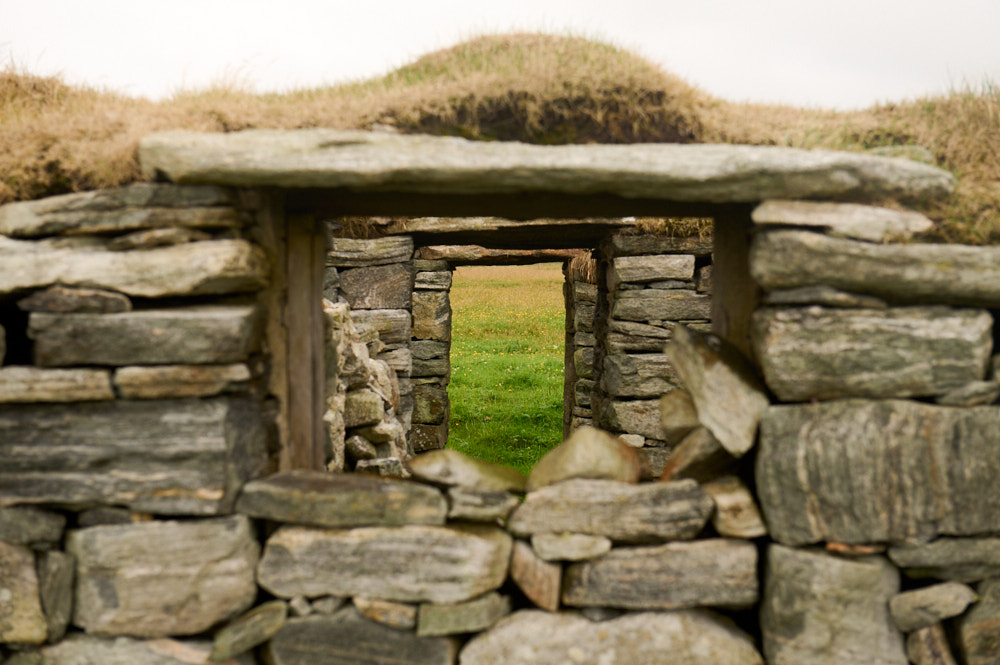
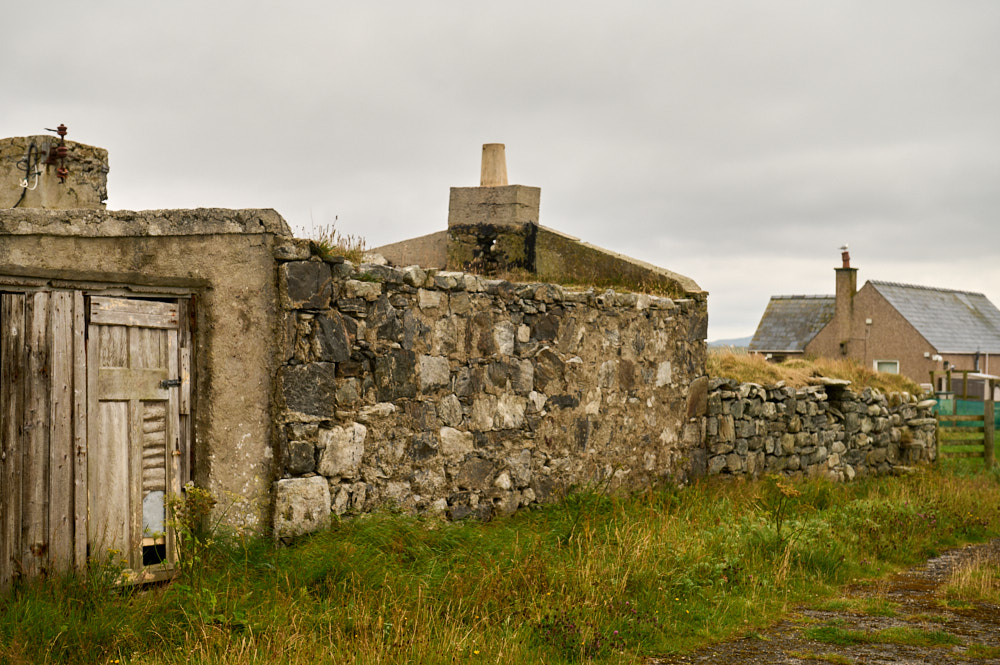
View of the three houses next to each other.
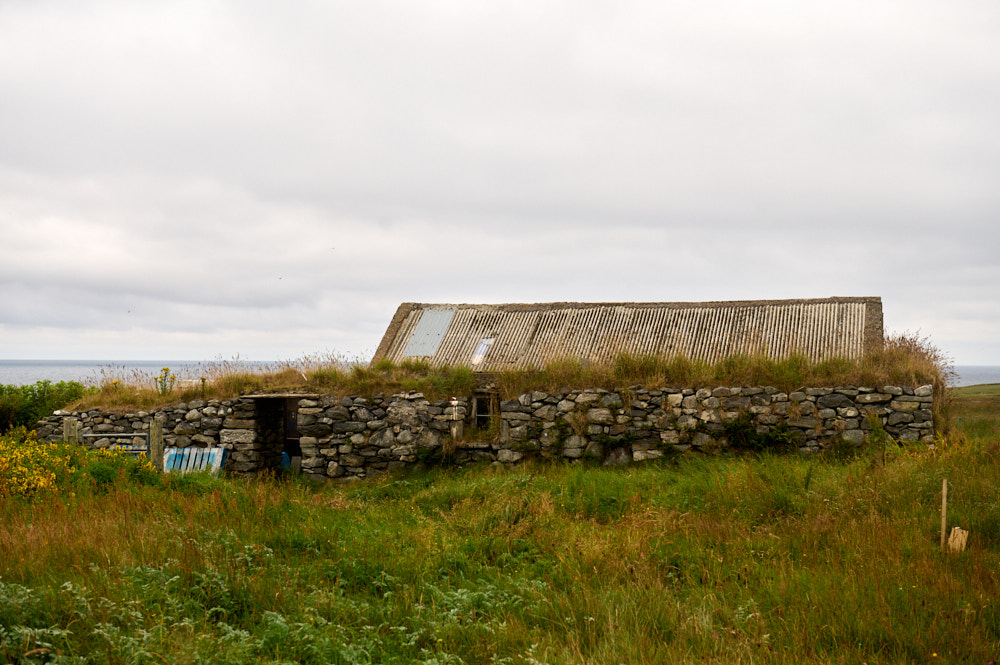
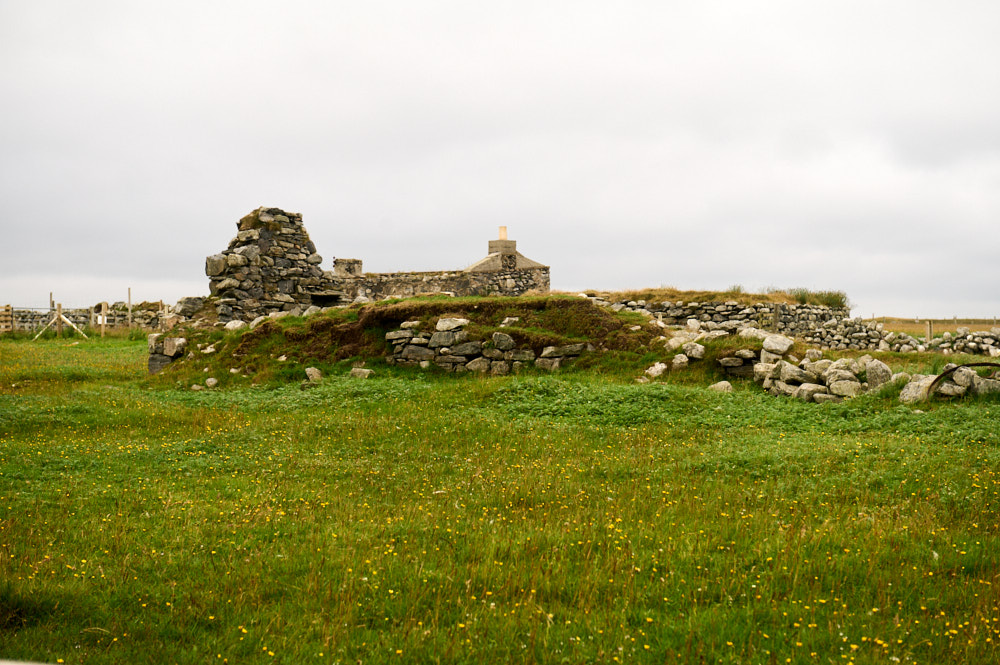
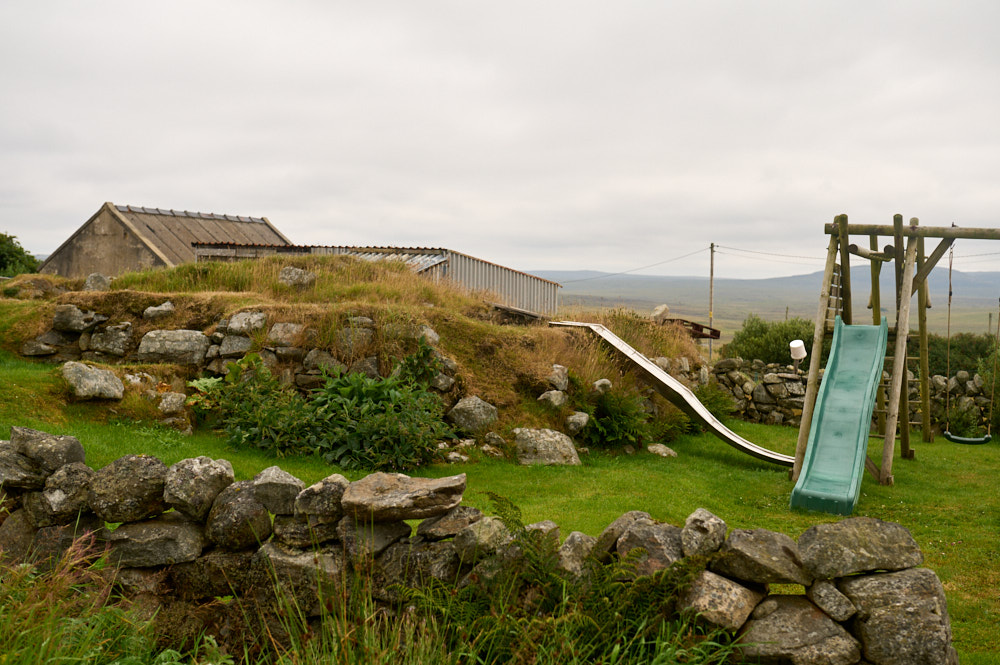
Blackhouse used as a playground, such a lovely idea.
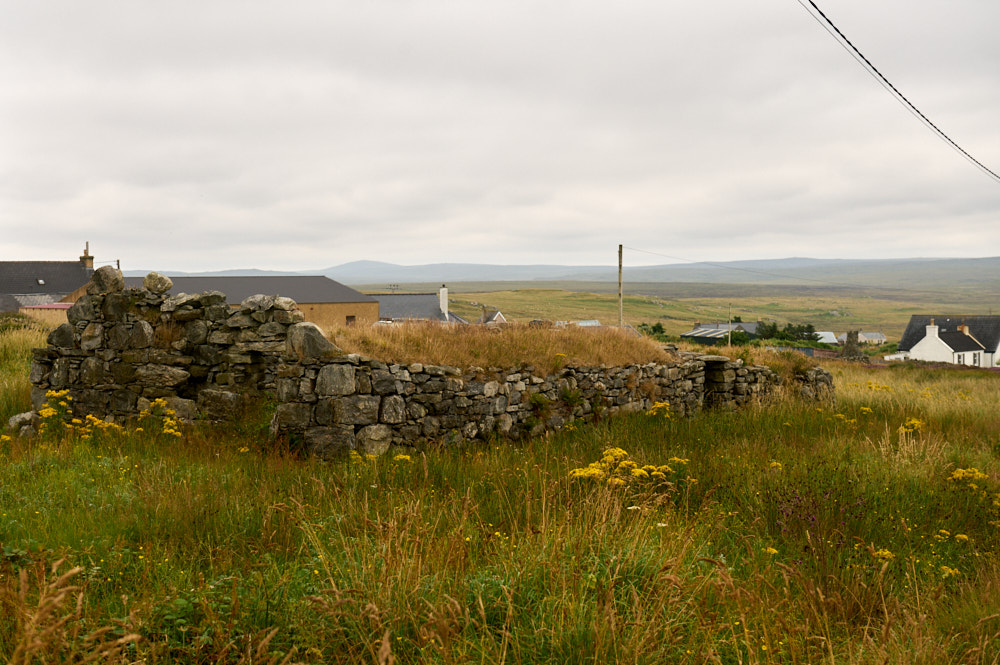
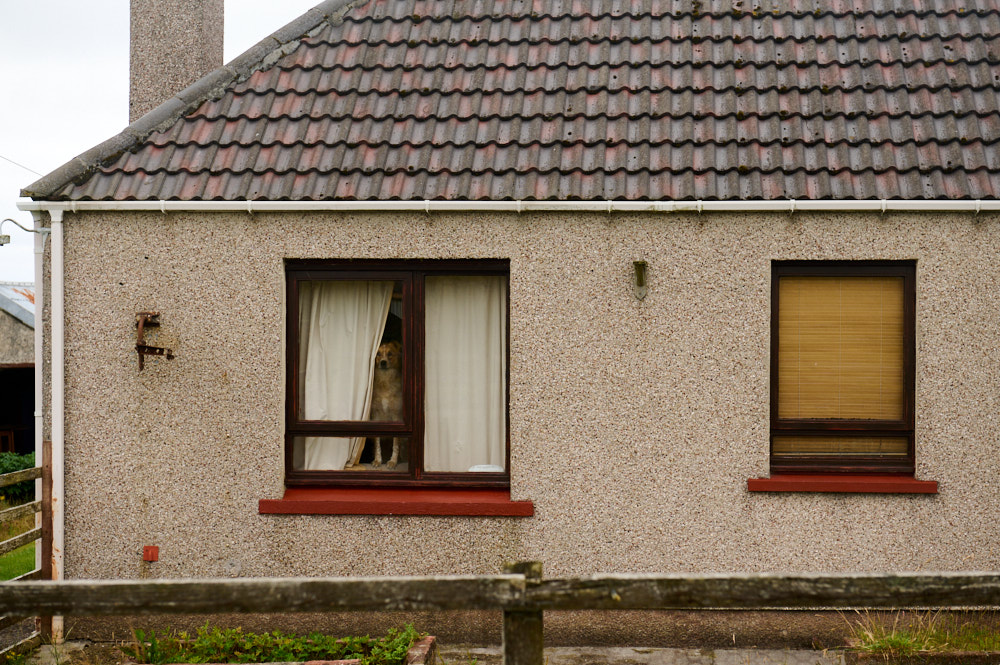
A watchful neighbour looking out…
